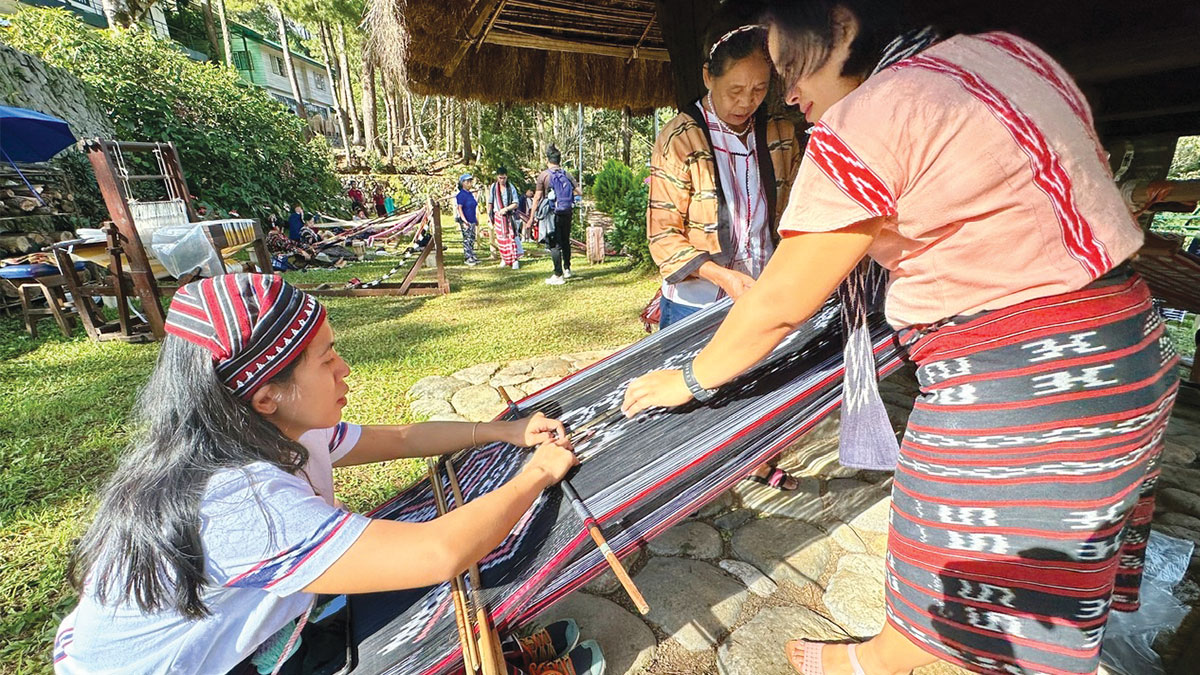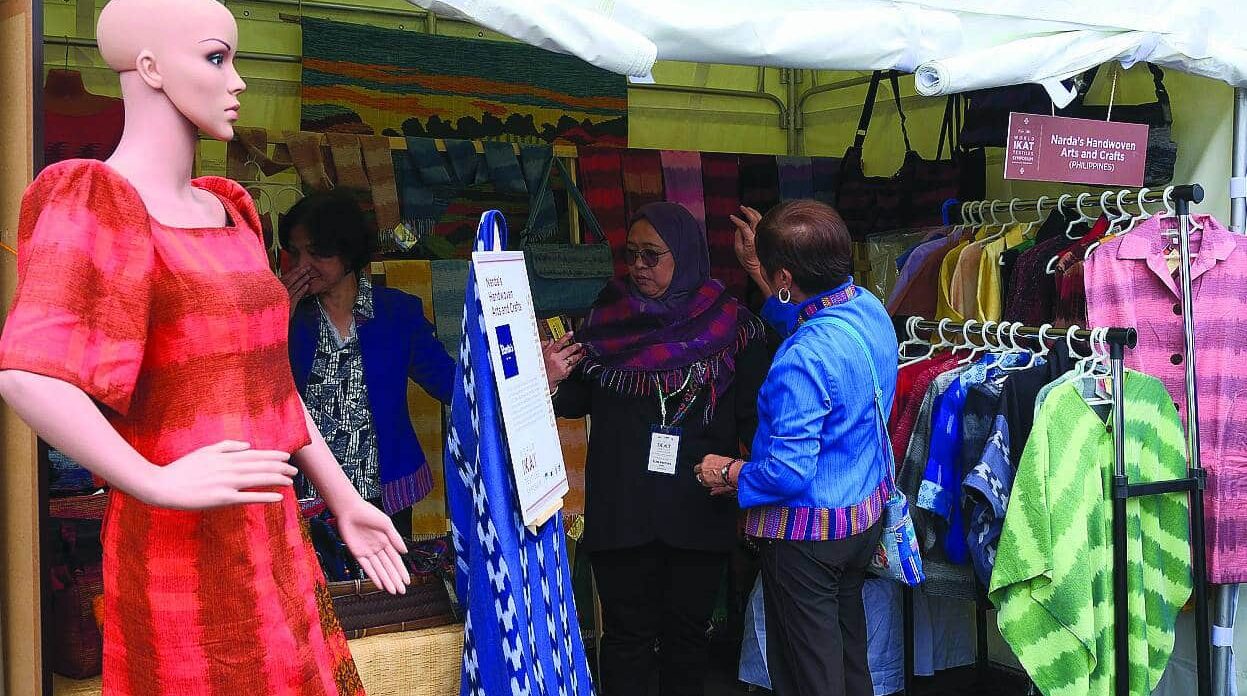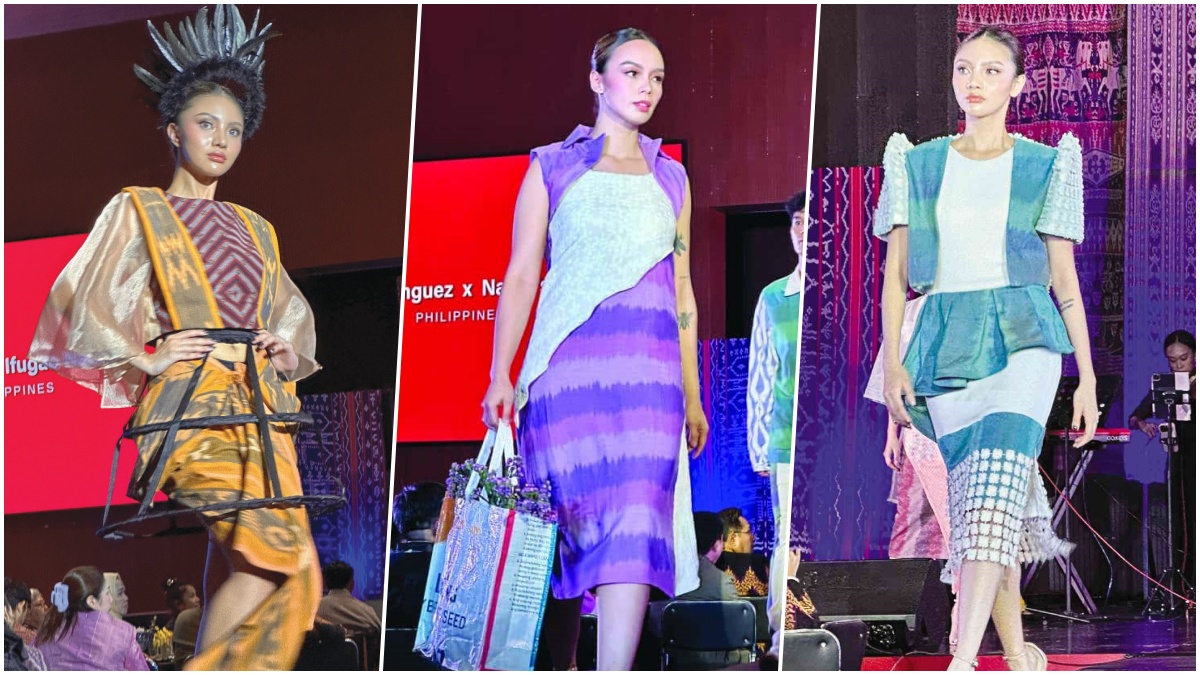

OPENING MARKETS Conventional woven clothes proceed to serve the Cordillera’s ritual life however fashionable variations of “ikat” patterns and colours helped put the craft within the home and world markets, due to the late Narda Capuyan. Since her passing, her daughter Lucia has stored her model Narda’s alive whereas granddaughter Madeleine has been studying the commerce. —Images by Joel Arthur Tibaldo
BAGUIO CITY, Philippines — Trend lovers would flock to the summer season capital within the late Nineteen Seventies by the Nineties to buy “ikat” clothes, baggage and residential décor crafted by Narda’s—arguably the primary Cordillera model to captivate each Metro Manila’s elite and a world viewers.
The model was based by Narda Capuyan, a former household planning nurse who acknowledged the business potential of conventional Cordillera textiles.
She employed native weavers to create vibrant, handcrafted items, reworking the common-or-garden artwork of weaving—frequent within the quiet cities of the Cordillera area—right into a thriving enterprise with fashionable attraction.
READ: Cordillera weaver’s tapestry baggage int’l award
Capuyan’s enterprise acumen performed a pivotal function in reviving and spotlighting Cordillera “ikat” (a technique of dyeing or coloring cloth in patterns earlier than it’s woven) at a time when conventional backstrap and loom weaving have been on the point of fading away.
Article continues after this commercial
Her daughter, Lucia Capuyan Catanes, highlighted this legacy through the World Ikat Textiles Symposium held in Baguio Metropolis this week.
Article continues after this commercial
Capuyan grew up within the Mountain Province city of Besao, the place woven blankets and different supplies have been day-to-day utilitarian gadgets that have been additionally ritual artifacts of some significance.
“My mom’s familiarity with weaving within the area developed over time … Realizing weave, though not at all times by sitting on the loom, made her respect the tough and laborious strategy of loom weaving,” Catanes stated.
In response to Catanes, Narda’s initially had a distinct segment market as “pasalubong” (present merchandise), however its uniquely vivid ikat colours and patterns drew the highlight overseas when overseas patrons started importing her “stylish and trendy heirloom gadgets,” she stated.
However to broaden the model, Capuyan additionally practiced what environmental activists now promote to fight local weather change: recycling and upcycling. This made her a sustainable useful resource practitioner means earlier than it had change into a motion, stated Catanes.
As a baby, Catanes stated she was typically irritated by her mom’s catchphrase: “Kailala” (Kankanaey for “what a waste”).


PROUDLY LOCAL Narda’s merchandise, now carrying designs made by daughter Lucia, are on show at a bazaar through the World Ikat Textiles Symposium in Baguio Metropolis this week. —Neil Clark Ongchangco
“My mom within the early years of the enterprise discovered a manufacturing facility that made gloves, socks and underwear [and threw out] extra gadgets, extra yarn and trimmings … [along with] cones, cardboard, plastic sheets and extra,” Catanes stated, so Capuyan purchased them and sorted out the uncooked supplies she may reuse.
Recycling, upcycling
Capuyan inspired the ladies locally to unravel discarded gloves, reworking them again into their authentic yarn, which was then used to weave colourful blankets, Catanes defined.
Even the elastic trimmings from underwear, known as “jersey,” have been repurposed —minimize and formed into elements for luggage, flooring rugs and wall hangings, Catanes added.
Capuyan later found Litton Mills, a Metro Manila-based denim manufacturing facility, which produced waste supplies corresponding to denim selvedges (completed edges that don’t fray) and unused yarns referred to as “slashers” (blue cotton threads). These byproducts have been creatively repurposed to craft baggage and rugs, Catanes stated.
“Within the Eighties, the supervisor of a leather-based producer discovered about how Mama was good at developing with merchandise out of ‘basura’ (trash). She invited [my mother] to type by their waste, and Mama produced woven leather-based [bags and décor] by slicing and typically pasting the leather-based collectively,” she stated.
Yarn scraps deemed too brief for the loom are repurposed as stuffing for pillows or upholstery.
Even cloth scraps, or “retaso,” discover new objective, being reworked into quilts and appliqué wall décor, Catanes stated.


FASHION Narda’s is arguably the primary Cordillera textile model that has drawn world consideration. Its trend line was showcased together with different indigenous clothes within the area through the World Ikat Textiles Symposium this week.
Capuyan died in 2016, however her frugality and creativity nonetheless information the enterprise at the moment, Catanes stated.
Narda’s, she stated, now produces ecobags by restyling flour sacks at her bakery with “trimming patchworks.”
Ardour, household
Capuyan’s ardour for ikat was ignited within the Nineteen Seventies by her good friend, US Peace Corps Volunteer Ellen Schatsneider, who launched her to the artwork of tie-dyeing materials.
“My [20-year-old] daughter Madeleine has taken an curiosity in pure dyes,” Catanes stated, including that her daughter has been tagging alongside each time she attends workshops and symposiums.
Madeleine advised the Inquirer that she had first-hand publicity to ikat manufacturing on the age of 13.
Catanes stated in 2016, they launched Narda’s Naturals, which was the model’s eco-friendly line of merchandise that makes use of assets like a mahogany tree farm planted many years in the past by her father, Wilson, on the household’s Winaca Ecological Village in Tublay city at Benguet. Narda’s office has relocated from its authentic manufacturing facility in te Benguet capital city La Trinidad to Winaca.
“Ikat was and can at all times be a part of my heritage. As a baby, tying rubber strands on the warp [of a loom] was play,” Catanes stated, noting that she has since taken up the duty of offering livelihood to Cordillera ladies, lots of them moms, whose conventional weaving expertise form their identification.

